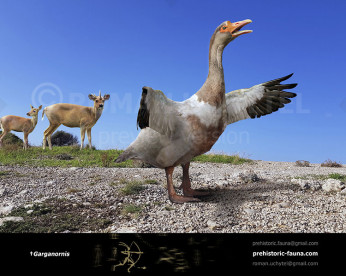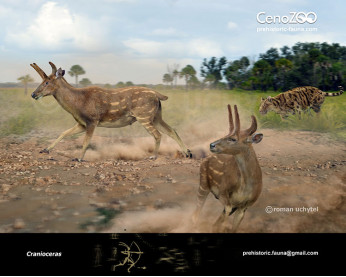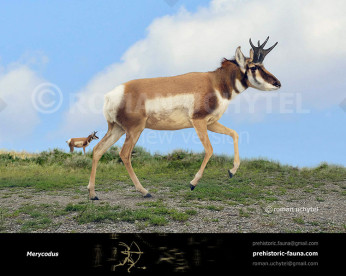Hoplitomeryx matthei
119119Hoplitomeryx (Croizetoceros Heintz 1970)
Order: Artiodactyla
Family: Hoplitomerycidae
Expansion and period of existence: Middle Miocene - Early Pliocene of Europe (11 – 4,3 million years ago)
Dimensions: length - 1,75 m, height - 105 cm, weight - 110 kg.
A typical representative:Hoplitomeryx matthei Leinders, 1984
The extinct Miocene-Pliocene mammal Hoplitomeryx looks quite like a deer. It had notable saber-like upper canine teeth (as the musk deer), a pair of horns above each additional eye orbit and a single central frontal horn. It lived during the Miocene and Early Pliocene on the island Gargano, which is now a peninsula on the east coast of the South of Italy. Hoplitomeryx's largest variation in size was like that of an elk, but more elegant and graceful. It had large-scale diversity, probably due to adaptation, since when its. The absence of large predators and a limited amount of food in all the niches also help the development of various sizes.Hoplitomeryx was a deer-like ruminant with a pair of pronged horns above each orbit and one central nasal horn. Hoplitomerycidae are not the only horned deer, before the appearance of antlered deer, members of the deer family had horns.
Hoplitomeryx (Croizetoceros Heintz 1970)
Order: Artiodactyla
Family: Hoplitomerycidae
Expansion and period of existence: Middle Miocene - Early Pliocene of Europe (11 – 4,3 million years ago)
Dimensions: length - 1,75 m, height - 105 cm, weight - 110 kg.
A typical representative:Hoplitomeryx matthei Leinders, 1984
The extinct Miocene-Pliocene mammal Hoplitomeryx looks quite like a deer. It had notable saber-like upper canine teeth (as the musk deer), a pair of horns above each additional eye orbit and a single central frontal horn. It lived during the Miocene and Early Pliocene on the island Gargano, which is now a peninsula on the east coast of the South of Italy. Hoplitomeryx's largest variation in size was like that of an elk, but more elegant and graceful. It had large-scale diversity, probably due to adaptation, since when its. The absence of large predators and a limited amount of food in all the niches also help the development of various sizes.Hoplitomeryx was a deer-like ruminant with a pair of pronged horns above each orbit and one central nasal horn. Hoplitomerycidae are not the only horned deer, before the appearance of antlered deer, members of the deer family had horns.

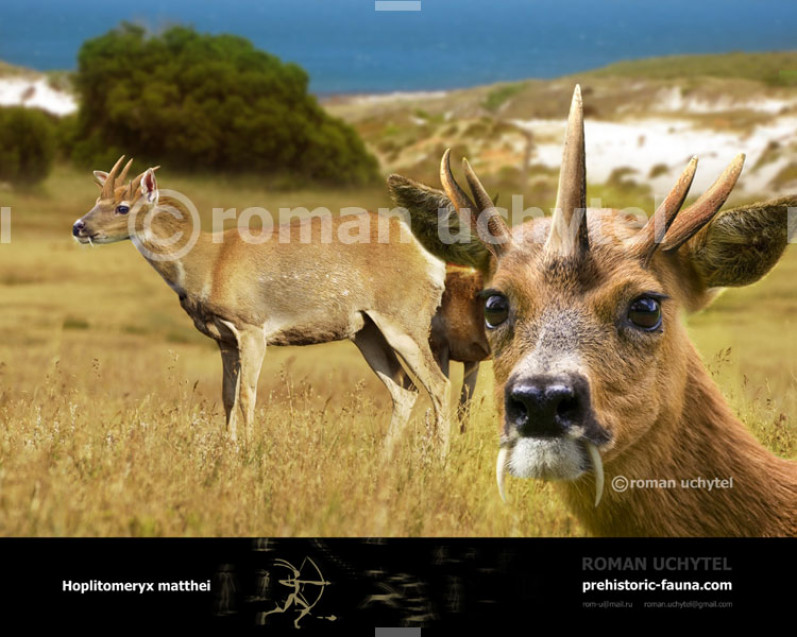
-797x638.jpg)
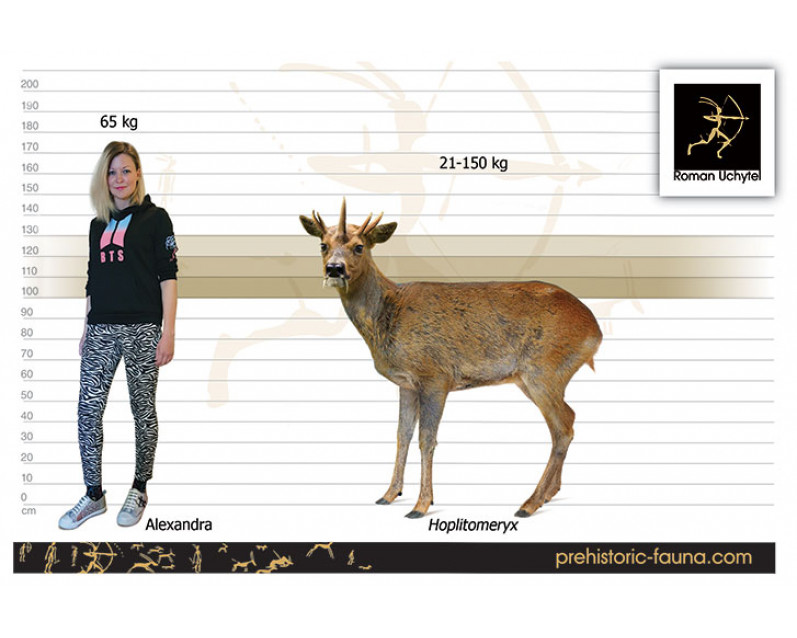

-70x56.jpg)

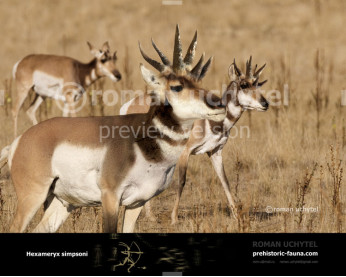
-346x277.jpg)
